We may earn money or products from the companies mentioned in this post. This means if you click on the link and purchase the item, I will receive a small commission at no extra cost to you ... you're just helping re-supply our family's travel fund.
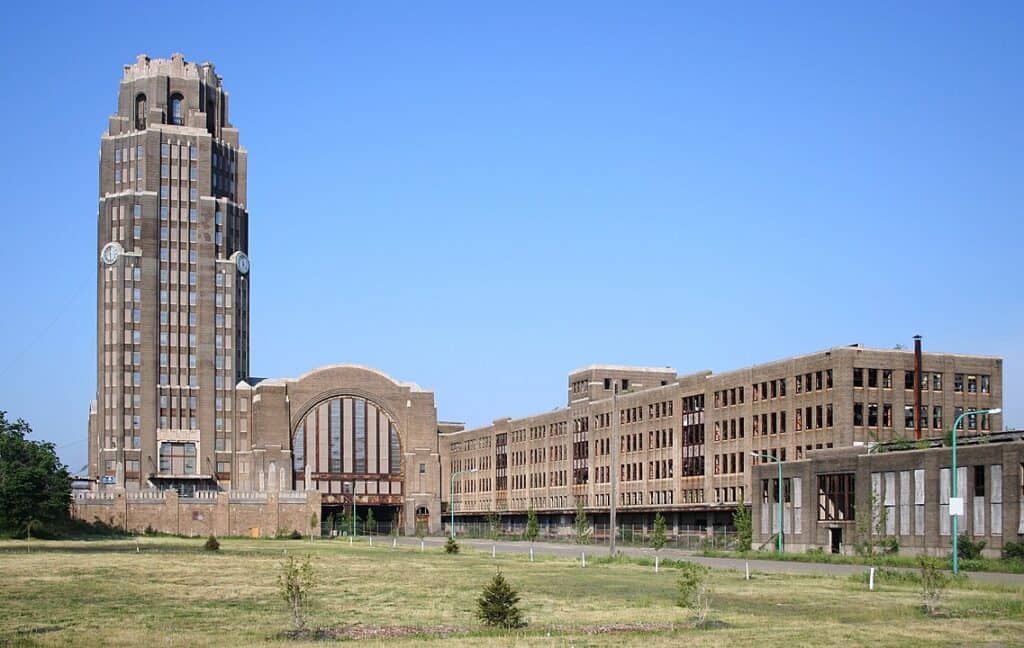
Cities shed skins and keep secrets. Behind bright storefronts sit shuttered stations, silent factories, and rooms where time stalled and dust took over. These places carry labor, loss, and reinvention, often within sight of stadiums and skyline bars. The mood is not horror so much as residue; footsteps fade and stories remain. What follows walks that edge. Each site is city born, emptied by flood or finance or fashion, and still powerful enough to bend the air around it.
Packard Automotive Plant, Detroit, Michigan

A concrete empire once built luxury cars and wartime engines, then fell quiet as Detroit’s auto belt tightened. Blocks of skeletal windows stretch down East Grand Boulevard, ivy threading through rebar where foremen once whistled shift changes. Scrappers, artists, and historians keep watch as demolition inches forward, leaving fragments like teeth in a long jaw. The ruin reads like a ledger: boom, contraction, stubborn pride. Even broken, the scale explains how a city learned to move the world.
City Methodist Church, Gary, Indiana
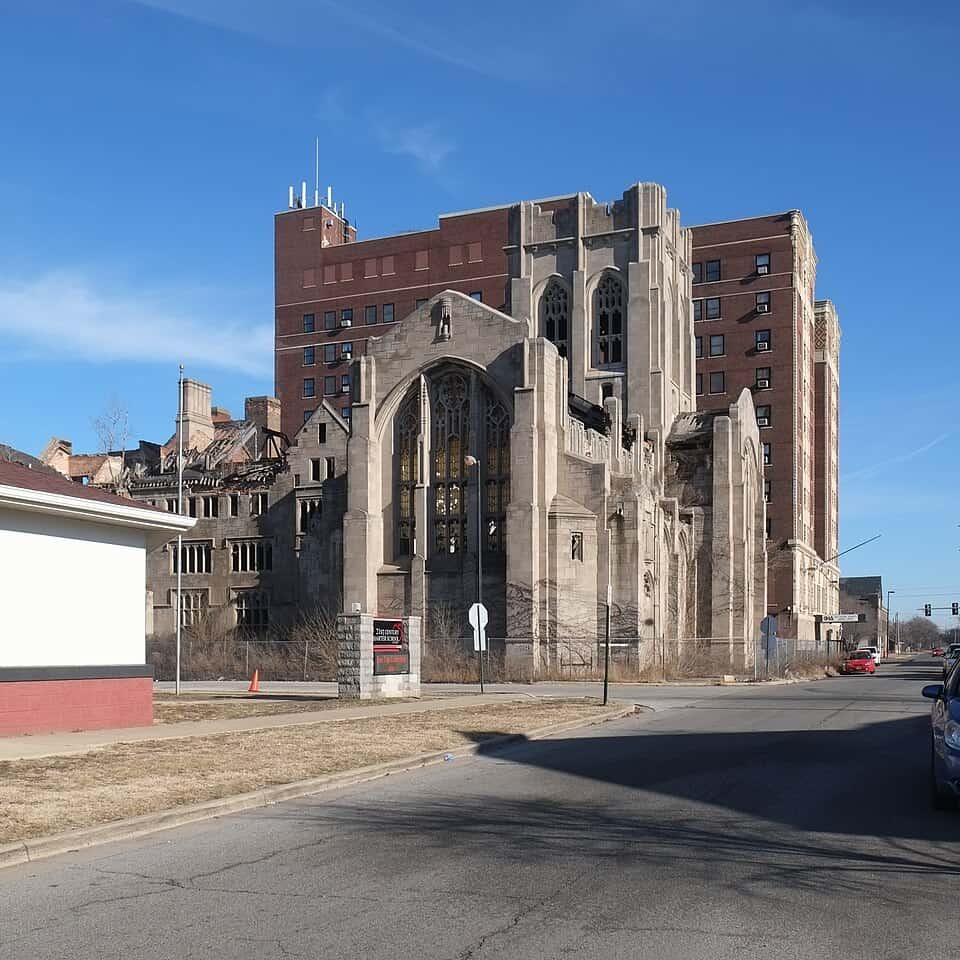
Gothic stone walls rise over Broadway with nave arches open to sky, a cathedral of emptiness in a city forged by steel. Weddings and sermons gave way to pigeons, saplings, and film crews chasing atmosphere, yet the bones still hold dignity. Stained glass long gone, light splashes across cracked tile and altar steps. It feels less cursed than paused, a sanctuary measuring the distance between promise and payroll. Wind whistles through ribs that once amplified prayer.
Cincinnati Subway Tunnels, Cincinnati, Ohio

Beneath Central Parkway, unfinished stations and miles of tunnel trace a transit dream that stopped with politics and the Depression. Tilework and platforms wait in the dark, a ghost blueprint for a city that kept growing above. Occasional tours and maintenance lights reveal a network almost, not quite, real. The absence hums. Every curve hints at cars that never came, schedules that never printed, and a river city that chose bridges and buses instead of rail.
Eastern State Penitentiary, Philadelphia, Pennsylvania
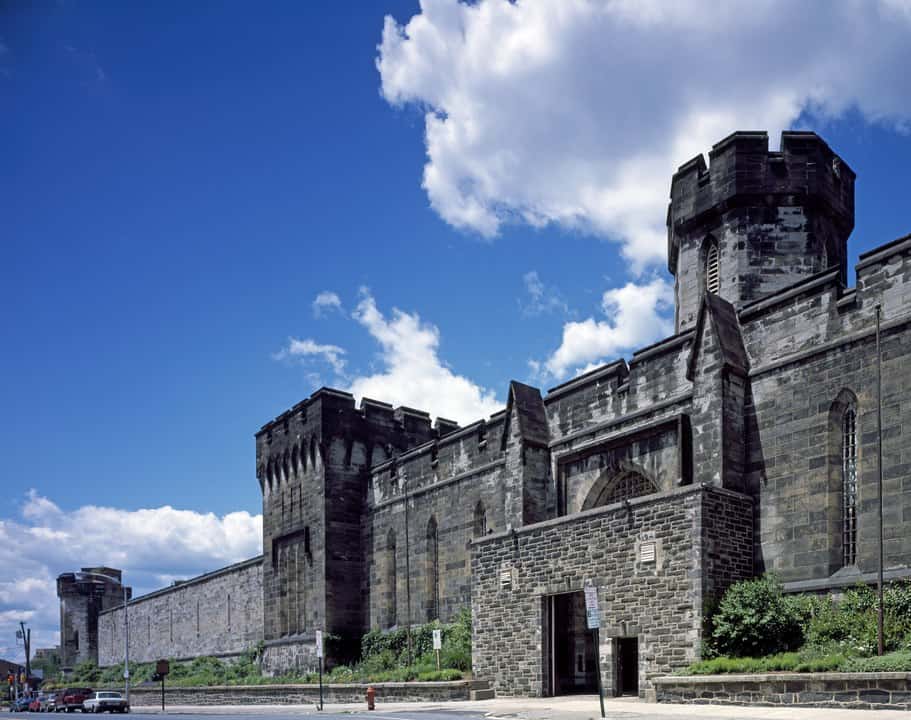
Radial cellblocks and a looming wall turn daylight into a lesson about isolation and reform. Famous names echo, but ordinary lives define the place: narrow doors, peeling paint, and a chapel that swallowed whispers. The city presses close outside; inside, time dilates. The ruin is curated but honest, a museum that keeps its scars visible. It asks for patience, then answers with humanity, showing how good intentions can calcify into cold stone and quiet regret.
Old Los Angeles Zoo, Los Angeles, California

In Griffith Park, concrete grottoes and rusted cages sit in the chaparral, picnic tables tucked where big cats once paced. Families wander through barred doorways and chipped moats, reading an older idea of care in every bolt and seam. Coyotes sing at dusk, helicopters thrum beyond the ridge, and the city feels close yet distant. The enclosures are relics, not props, and they tell a plain story: understanding shifted, animals moved, and shadow stayed.
Six Flags New Orleans, New Orleans, Louisiana
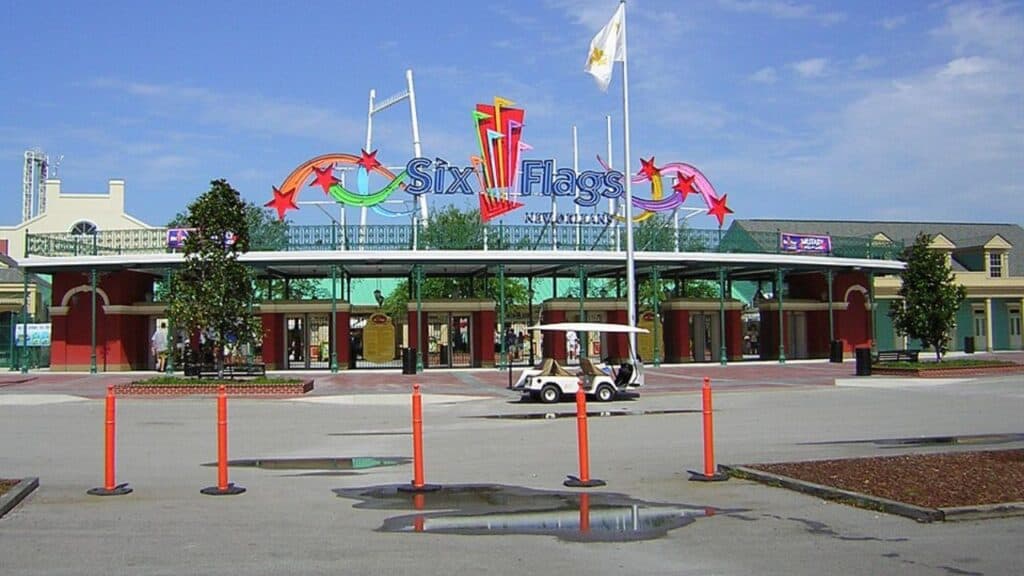
Ferris wheel ribs and sun-bleached signs linger where crowds fled before Katrina’s water rose. For years the park slept in brackish silence, rides frozen mid-gesture as if waiting for a cue that never came. Proposals circle, fences hold, and grass climbs the steel. The ghost here is not legend but logistics: insurance, permits, and the cost of undoing salt and time. The skyline peeks beyond, patient as ever, while the midway keeps its secrets.
Red Hook Grain Terminal, Brooklyn, New York
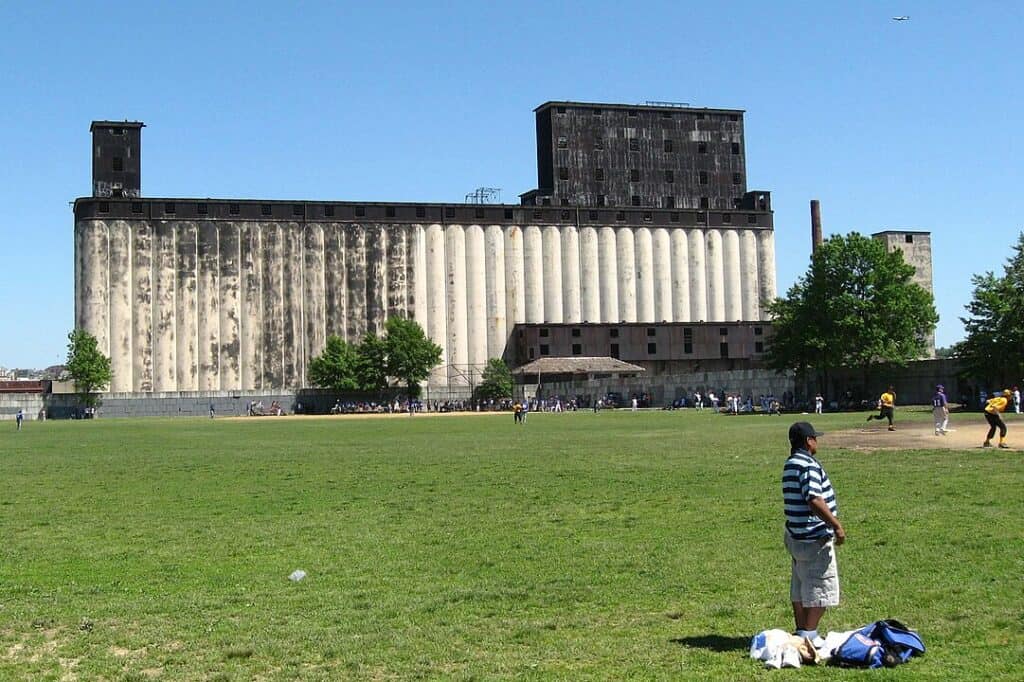
A monolith of concrete cylinders towers over Gowanus Bay, a relic of grain that once poured down the Erie and out to sea. The elevator’s windows frame harbor light like empty eyes, gulls nesting where conveyors rattled. Industry shifted, the silos stood, and a new city grew around them. Artists and photographers turn up on gray mornings, chasing the texture of poured stone and quiet water. It is a lighthouse for ghosts, guiding nothing but memory.
Buffalo Central Terminal, Buffalo, New York
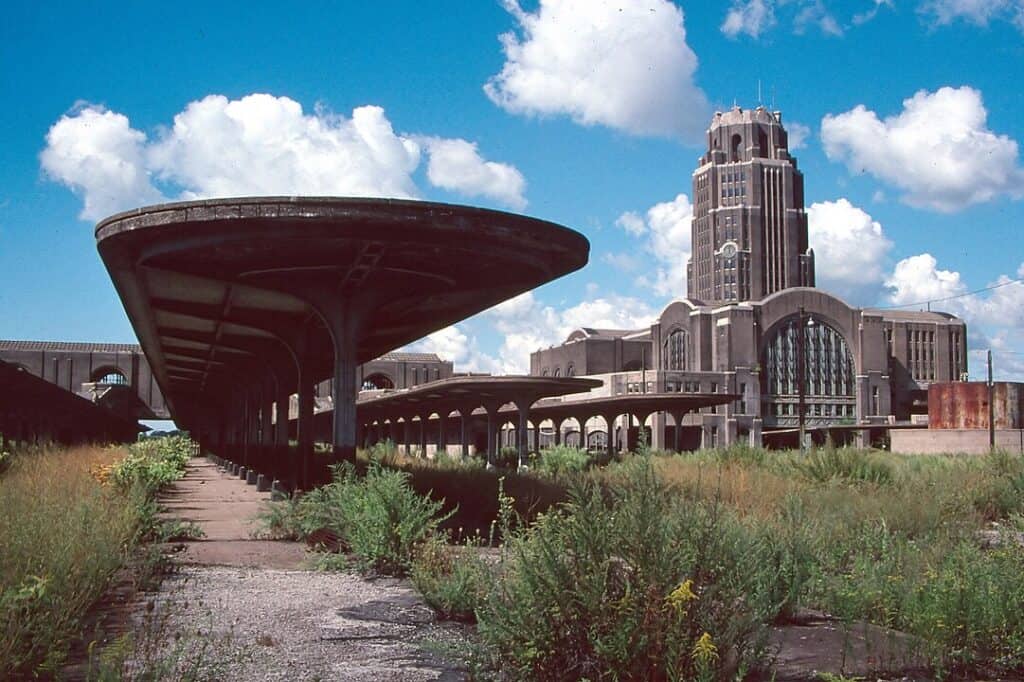
Art Deco lines lift a clock tower over an east side neighborhood, a station built for crowds that stopped coming. The concourse still holds elegance in fractured tiles and soft echoes, restoration inching forward between seasons of events. Trains pass on other tracks while volunteers catalog plaster and glass. The place carries both ache and grit, a city’s story condensed under a vaulted roof. Even empty, it knows how to gather people and send them home.
City Hall Subway Station, New York City, New York
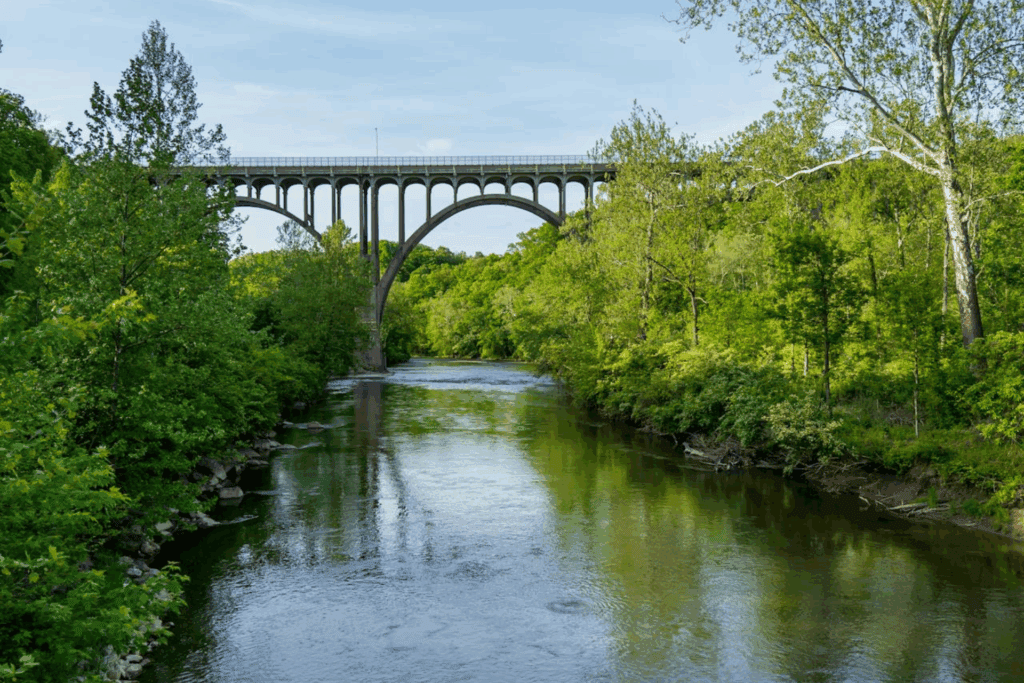
A hidden loop curves under Lower Manhattan with Guastavino tile, brass fixtures, and daylight drifting through a glass oculus. Closed to regular service since the mid-century, it survives as a jeweled pocket that trains glide past without stopping. The line chose capacity over charm, and the station kept its dignity by disappearing. Rumor clings to it, but the truth is better: a small cathedral for transit, still doing its job in silence as the city roars above.
Sutro Baths Ruins, San Francisco, California
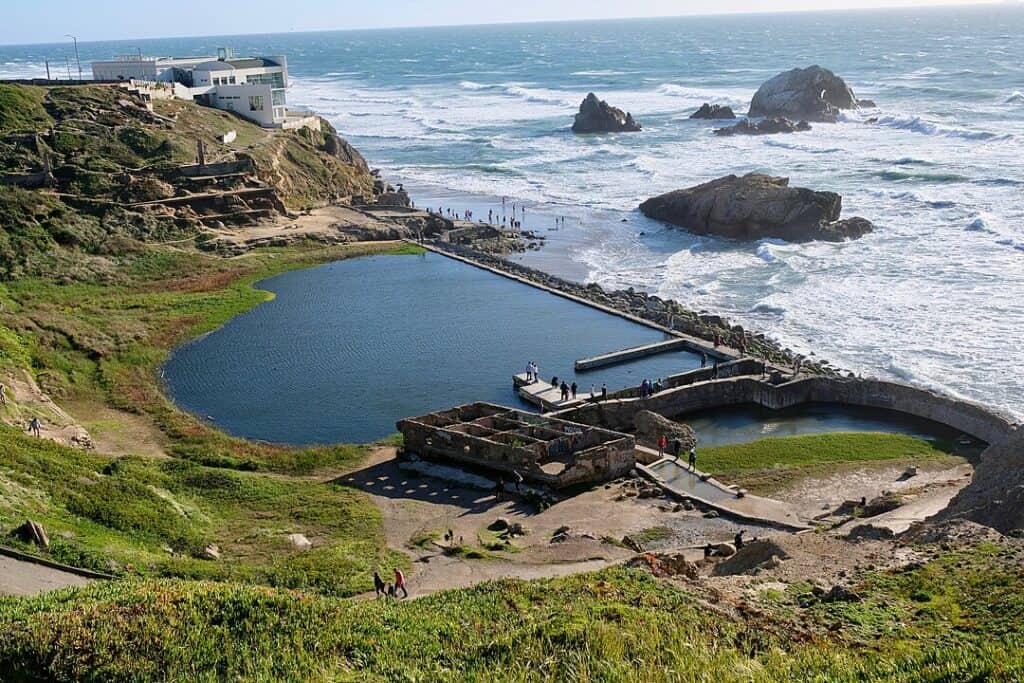
Broken pools and concrete stairs step down to the Pacific, the bones of a public bathhouse that once glittered with glass and steam. Waves roll through gaps where swimmers lined up, gulls wheel over foundations that catch late sun. The Cliff House watches from the bluff, and the city’s fog presses a hand on the scene. Fire, costs, and changing tastes erased the rest. What remains is honest: water, wind, and a geometry built for crowds now serving silence.
Sterick Building, Memphis, Tennessee
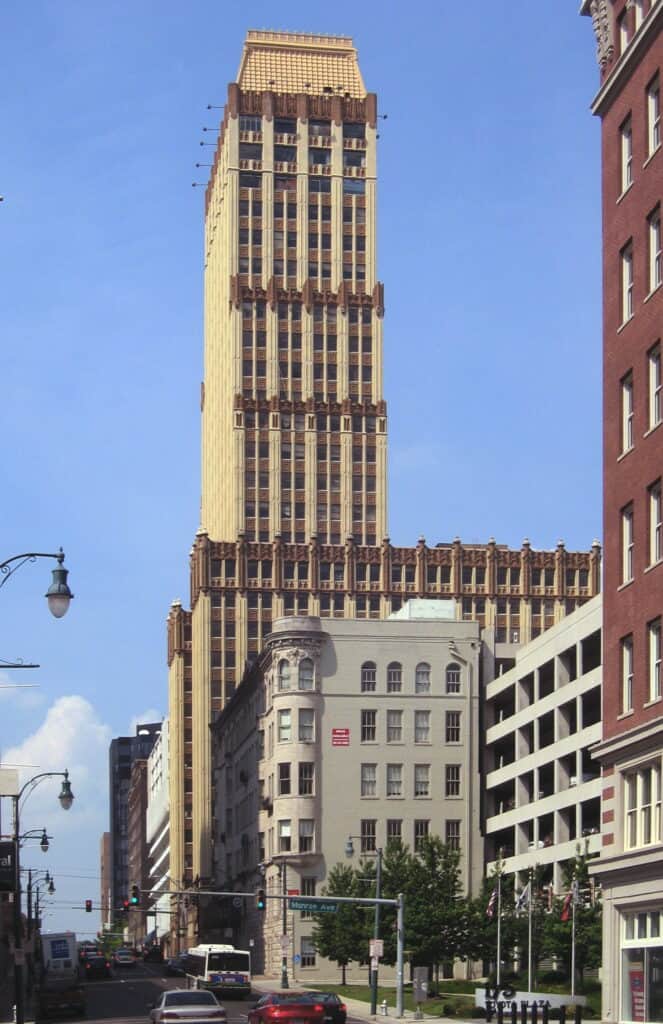
A Gothic skyscraper nicknamed the “Queen of Memphis” rose in 1930, then watched tenants drift away as downtown shifted. Limestone pinnacles and green rooflines still cut a profile above Court Square, while interiors wait in dust and filtered light for a plan that sticks. Proposals surface, momentum wobbles, and the tower keeps its poise. The building looks like confidence made stone, paused mid-sentence. Its haunted air comes from vacancy, not rumor, and the view remains unbeatable.